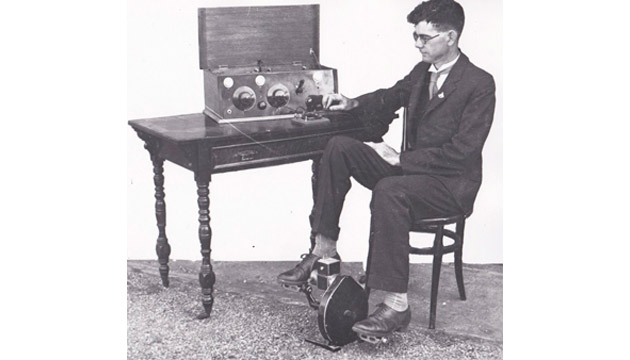The Reverend John Flynn gave the Royal Flying Doctor Service its wings, but the man who gave it a voice remains something of a forgotten hero.
Story by Gretel Sneath
When the Reverend John Flynn was planning his Australian Aerial Medical Service (later renamed the Royal Flying Doctor Service) in the 1920s, he wanted to bridge the isolation gap in remote outback communities. He had already instructed his fellow ministers to go out and “just listen to people”, but how could a cry for help be heard in the middle of the bush – especially during a medical emergency? Enter born tinkerer Alfred Traeger.
From the turn of last century, a young Alfred could be found in the family backyard concocting potions and conducting experiments. His Adelaide-based daughter, Anne Smallwood, remembers stories of rotten-egg gas and dust explosions drifting over to next door’s verandah. “Dad told me that his parents decided to move the family to Adelaide from country South Australia because of the better educational opportunities there, but it was more likely that the neighbours begged them to move after his experiments,” she says. “Dad then managed to short circuit the whole lighting system at the School of Mines, where he became a student, and the professor who was lecturing immediately knew who was to blame.”
Far from perturbed, Alfred went on to complete an electrical engineering diploma and established his own small electrical business, Traeger Transceivers. Rev. Flynn was an early customer, requesting a reliable, portable generator to provide sufficient power for transmitting messages to and from the outback. Inspired by travelling picture shows that used pedal power to bring stories to the screen, Alfred looked at creating a pedal-operated generator to power a radio receiver.
This story excerpt is from Issue #108
Outback Magazine: Aug/Sep 2016









